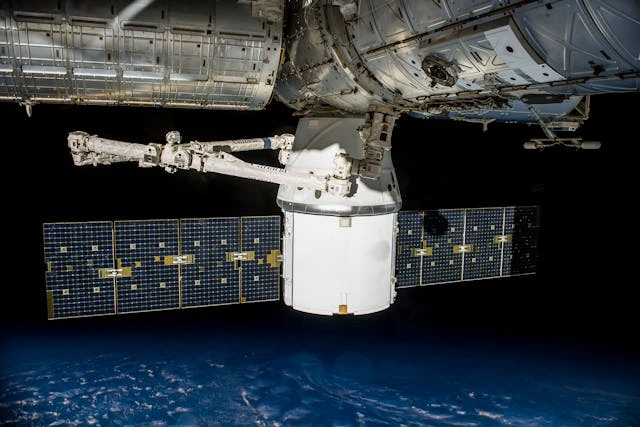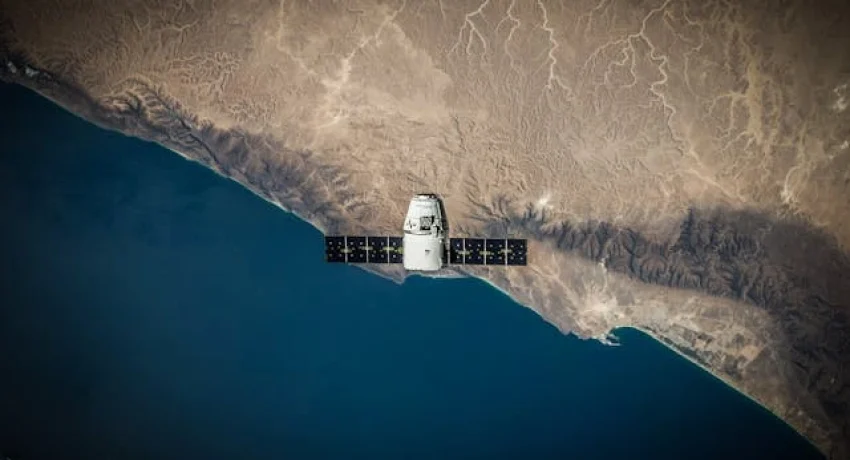SPACE TECH AND EXPLORATION
The space industry has entered an exciting and transformative phase of its development, marked by rapid technological advancements, ambitious missions, and increasing involvement from private companies. As governments, international organizations, and private enterprises push the boundaries of space exploration and technology, we are witnessing the dawn of a new space age, one that promises significant growth, innovation, and global collaboration. From satellite deployment to lunar exploration and the nascent beginnings of Mars missions, space technology and exploration will continue to evolve, with commercial ventures leading the charge in shaping the future of the cosmos.
THE FUTURE OF COMMERCIAL VENTURES, SATELLITE DEPLOYMENT, LUNAR EXPLORATION, AND MARS MISSIONS
In this article, we will explore the trajectory of the space industry, focusing on the burgeoning commercial sector, the advancements in satellite deployment, the renewed interest in lunar exploration, and the promising potential of Mars missions. By understanding the technological, economic, and geopolitical aspects of space exploration, we will gain insight into how the future of space tech will unfold over the coming decades.
1. The Rise of Commercial Space Ventures
The space industry has traditionally been dominated by government agencies such as NASA (United States), Roscosmos (Russia), ESA (European Space Agency), and CNSA (China National Space Administration). However, over the past few decades, private companies have emerged as powerful players in the space sector, leading to a shift in the dynamics of space exploration and technology development. Pioneering companies like SpaceX, Blue Origin, Rocket Lab, and many others are not only helping to reduce the costs of space travel but are also opening new opportunities for commercial ventures in satellite deployment, space tourism, lunar exploration, and beyond.
1.1 SpaceX and the New Frontier of Space Travel
Founded by Elon Musk in 2002, SpaceX has become one of the most influential companies in the space industry. SpaceX’s innovations in reusable rocket technology, such as the Falcon 9 and Falcon Heavy rockets, have drastically reduced the cost of space travel and made it more accessible to both government agencies and private companies. The successful landing and reusability of SpaceX’s Falcon 9 boosters have set a new standard for space operations, making space missions more efficient and cost-effective.
SpaceX’s major milestones include the first private company to launch a spacecraft to the International Space Station (ISS), the development of the Crew Dragon capsule, and its work with NASA to send astronauts to space. The company’s Starship project, which aims to send humans to Mars and beyond, marks another giant leap in space exploration. As the company refines its technology, the long-term vision of SpaceX is to enable the colonization of Mars, an idea that once seemed like a distant dream.
1.2 Blue Origin and the Emergence of Space Tourism
Founded by Jeff Bezos in 2000, Blue Origin is another key player in the commercialization of space. Blue Origin focuses on developing reusable rockets and spacecraft to reduce the cost of space travel and facilitate space tourism. The company’s New Shepard suborbital rocket is designed to carry passengers to the edge of space, providing a few minutes of weightlessness and a breathtaking view of Earth from space. Blue Origin made headlines in 2021 when Bezos himself flew aboard the New Shepard on its first crewed mission, marking a new era in space tourism.
Blue Origin’s long-term goals include creating a permanent human presence in space, particularly through the development of habitats and facilities in low Earth orbit (LEO) that can support commercial industries. As the company continues to refine its technologies, it may be at the forefront of making space travel more accessible to the general public, allowing ordinary people to experience the wonders of space firsthand.
1.3 The Role of Other Private Companies
While SpaceX and Blue Origin are the most well-known players in the space industry, many other companies are contributing to the commercial space sector in significant ways. Rocket Lab, a private company based in New Zealand and the U.S., focuses on providing affordable and frequent access to space through its Electron rocket. Rocket Lab’s small satellite launch capabilities have made it a key partner for satellite deployment and other commercial space missions.
Companies like Virgin Galactic, established by Sir Richard Branson, are also pushing the boundaries of space tourism, with the goal of offering suborbital flights to paying customers. Other private ventures, including OneWeb and Planet Labs, are focusing on satellite technology and deployment to provide global internet access and high-resolution Earth imaging.
As these private companies continue to innovate and expand their capabilities, the commercial space industry will continue to grow, driving new developments in space technology, infrastructure, and services.
2. Satellite Deployment and Space Infrastructure
One of the most significant areas of growth within the space industry is satellite technology. Satellites play a crucial role in a wide range of applications, including communications, weather forecasting, navigation, Earth observation, and scientific research. As the demand for these services increases, satellite deployment has become a major focus for both governmental agencies and private companies.
2.1 The Expanding Market for Satellite Communication
Satellite communication is one of the most important uses of space technology, enabling global telecommunications, television broadcasting, and internet services. As the world becomes increasingly interconnected, the demand for satellite communication services is expected to continue growing. Companies like SpaceX, through its Starlink project, are working to provide global high-speed internet access through low Earth orbit (LEO) satellite constellations.
Starlink, SpaceX’s ambitious satellite internet project, aims to deploy thousands of small satellites to create a vast network capable of providing broadband internet to remote and underserved regions across the globe. By providing internet access to areas with limited or no connectivity, Starlink has the potential to bridge the digital divide and enable greater economic development worldwide.
Similarly, OneWeb, a UK-based satellite communications company, is working to deploy a constellation of satellites to provide internet access to rural and remote regions. Both Starlink and OneWeb are positioning themselves as leaders in the satellite communication space, which could transform industries such as agriculture, education, healthcare, and more.
2.2 Earth Observation Satellites for Data and Monitoring
In addition to communication, Earth observation satellites have become an indispensable tool for monitoring and understanding our planet. These satellites provide vital data for weather forecasting, environmental monitoring, disaster response, and climate change studies. The growing interest in Earth observation has led to the launch of a new generation of small, cost-effective satellites designed to gather high-resolution data about the Earth’s surface.
Companies like Planet Labs, which operates a fleet of small Earth observation satellites, are at the forefront of this movement. These satellites provide real-time imaging of the Earth’s surface, offering insights into everything from urban development to deforestation, crop health, and natural disasters. By democratizing access to Earth observation data, private companies are playing a crucial role in solving global challenges related to agriculture, sustainability, and environmental protection.
2.3 The Future of Space Infrastructure
As the number of satellites in orbit increases, there will be a growing need for space infrastructure to support these systems. This includes satellite servicing and debris removal, as well as the development of spaceports, launch facilities, and on-orbit manufacturing capabilities. SpaceX’s development of reusable rocket technology has already significantly reduced the cost of satellite deployment, and future innovations in on-orbit servicing could extend the life of satellites and reduce the environmental impact of space activities.
The growing interest in space mining also has the potential to change the landscape of space infrastructure. By extracting valuable resources, such as rare metals and water, from asteroids or the Moon, private companies could build the infrastructure necessary for long-term space exploration and human settlement.
3. Lunar Exploration: Returning to the Moon
Lunar exploration is experiencing a renaissance, with several countries and private companies planning missions to return to the Moon in the coming years. The Moon serves as an ideal testing ground for future space exploration, offering the potential to develop technologies and infrastructure that will be crucial for missions to Mars and beyond.

3.1 NASA’s Artemis Program and the Return of Humans to the Moon
NASA’s Artemis program is a cornerstone of the United States’ renewed interest in lunar exploration. The goal of Artemis is to land “the first woman and the next man” on the Moon by 2024, with a long-term vision of establishing a sustainable human presence on the Moon by the late 2020s. This program aims to use the Moon as a platform for testing technologies and conducting research that will be critical for future Mars missions.
The Artemis missions will involve the construction of the Gateway, a space station that will orbit the Moon and provide a staging point for lunar surface missions. NASA has already partnered with private companies, including SpaceX and Blue Origin, to provide transportation and lander systems for the Artemis program. Through public-private collaboration, NASA aims to make the Moon an important hub for scientific research, resource utilization, and space exploration.
3.2 The Role of Private Companies in Lunar Exploration
Private companies are also making significant contributions to lunar exploration. SpaceX’s Starship, for example, is slated to serve as the human landing system for NASA’s Artemis program, capable of carrying astronauts from the Gateway to the lunar surface. Other companies, such as Astrobotic and Intuitive Machines, are developing lunar landers and rovers to support payload delivery and surface exploration.
In addition to NASA’s efforts, other countries and private companies are planning their own lunar missions. China’s Chang’e program has already achieved significant milestones, including landing a rover on the far side of the Moon. India’s Chandrayaan program and Russia’s lunar ambitions are also contributing to the global push to explore the Moon’s surface.
3.3 Lunar Resource Utilization: A Stepping Stone for Mars
One of the key reasons for returning to the Moon is its potential as a resource hub. The Moon is believed to contain valuable resources such as water ice, which could be used for life support, fuel production, and radiation shielding. The development of lunar resource utilization technologies could significantly reduce the cost of long-duration space missions, including those to Mars.
Mining the Moon for resources, such as helium-3, a potential fuel for nuclear fusion, could have far-reaching implications for space exploration and energy production. By learning how to extract and utilize resources from the Moon, humanity could establish a sustainable presence in space, paving the way for future missions to Mars and beyond.
4. Mars Missions: The Ultimate Goal
Mars has long been considered the next frontier for human exploration, and recent technological advancements have made the prospect of reaching the Red Planet more achievable than ever before. While we are still in the early stages of Mars exploration, several missions to study the planet and develop the necessary technologies are already underway.

4.1 SpaceX’s Vision for Mars Colonization
Elon Musk’s vision for Mars is one of the most ambitious in space exploration history. Through SpaceX’s Starship program, Musk aims to send humans to Mars in the coming decades and establish a permanent human colony on the planet. The Starship spacecraft is designed to be fully reusable, capable of carrying large numbers of passengers and cargo to distant destinations.
While the technological and logistical challenges of Mars colonization are immense, SpaceX’s progress in developing the Starship, along with its reusable rocket technology, could lay the foundation for future human missions to Mars. These missions would involve advanced life support systems, radiation shielding, and sustainable habitats capable of supporting human life on the Martian surface.
4.2 NASA’s Mars Exploration Plans
NASA’s Mars exploration program is also progressing, with the agency sending several robotic missions to study the planet’s surface and gather data on its potential for human habitation. The Mars Perseverance Rover, launched in 2020, is currently exploring the Jezero Crater, searching for signs of ancient life and collecting samples for future return to Earth.
NASA’s long-term goal is to send humans to Mars in the 2030









